
SAN DIEGO ASSOCIATION OF GEOLOGISTS
2016 SDAG Field Trip - Geohazards of Northern Baja California, Mexico
October 22 - 24, 2016
GEOLOGY AND GEOHAZARDS OF NORTHWESTERN BAJA'S GOLD COAST AND THE AGUA BLANCA FAULT
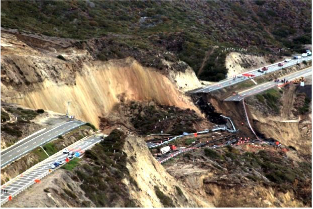
Evaluating the Effects of Geologic Hazards on the Local Landscape
On the 2016 field trip to Northern Baja, we examined features related to faulting, landsliding and other erosional and mass wasting processes, and assessed their effects on the local landscape.
The trip spanned 3 days, beginning on Saturday the 22nd of October with an early morning rendezvous and breakfast near the US-Mexico border, before crossing, and touring down the coast on Highway 1 to Punta Banda, just south of Ensenada, examining several faults, landslides and geologic exposures along the way.
Day two traversed the Agua Blanca fault zone, with the day culminating in examination of a new fault trench excavated (generously sponsored by Geocon Incorporated) in young alluvial fan deposits derived from a right-laterally offset drainage along the Agua Blanca Fault. Overnight was in the Santo Tomas area.
Day three we returned to the US, via some of the wineries in the Guadalupe Valley, before crossing the border at Otay and returning to our starting point to pick up vehicles.

We were very fortunate to have the help and guidance of some of the most experienced local geologists in Southern California, including our very own John Minch and Jim Ashby, who have worked extensively in Baja over the last 40 years.
Tom Rockwell, SDSU professor, added his expertise at the fault trench and fault related discussions.
In addition, we partnered with colleagues and graduate students at CICESE University, several of whom participated in the fieldtrip and shared their research.
We also had Peter Gold from the University of Austin Texas, who presented his research on the Agua Blanca Fault at our regular September meeting, and attended the fieldtrip as well to share his insights on the fault.
The 2016 field trip was conducted by bus and personal vehicles, beginning Saturday October 22 at 5:30am, ending Monday October 24, at 6pm.
The trip cost included this year's guidebook and T-shirt, transport by bus, all meals, drinks and snacks, and camp site fees.
|
Group photo at Geocon-excavated trench
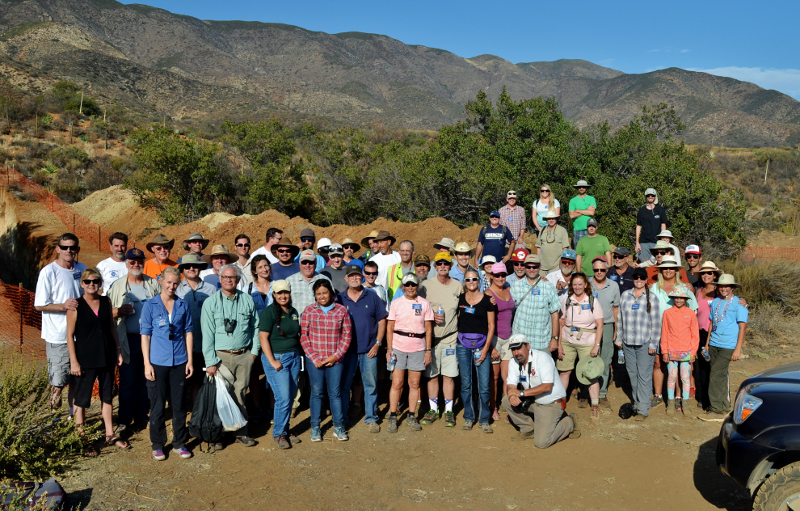
|
ITINERARY
Saturday, October 22: Meet at Caltrans Park and Ride lot at Caliente Avenue and the 905 Freeway starting at 5:30am
Check in and continental style breakfast. Bus and convoy departs for the border at ~7:20am.
Travel the coastal toll road (Hwy 1D) to Villarino Camp Ground, via multiple stops.
Lunch at La Fonda at noon, dinner catered at the camp ground. Evening discussions.
Stop 1 Los Buenos Fault in Plio-Pleistocene San Diego Fm.
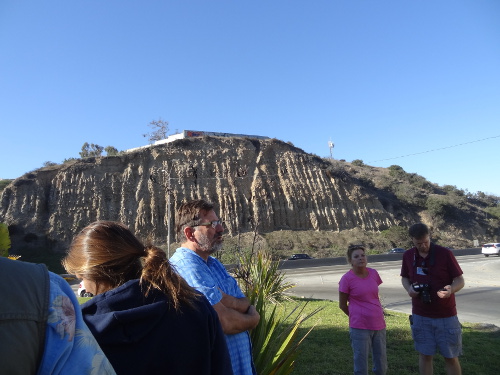
|
Agua Caliente Fault - Playas de Rosarito
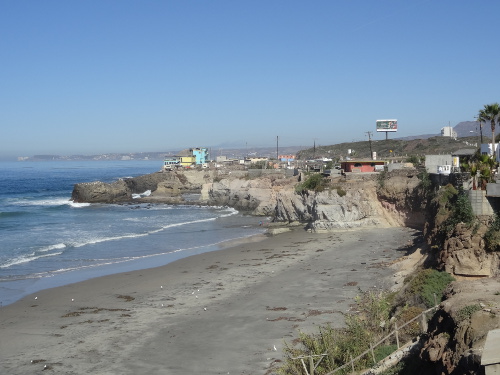
|
|
Minch Fault Map
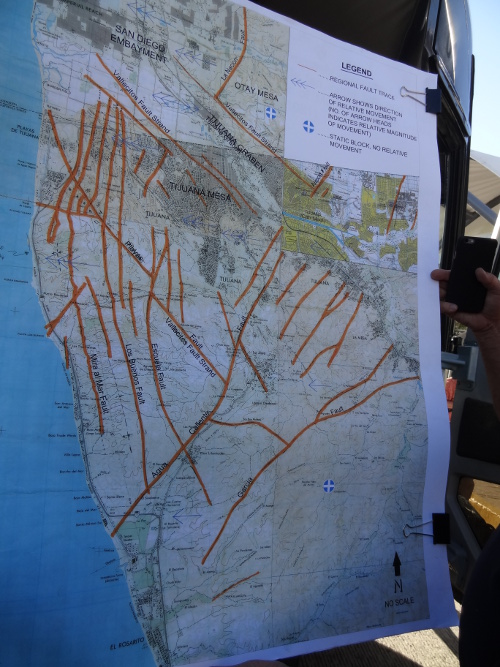
|
Source of volcanics drawing
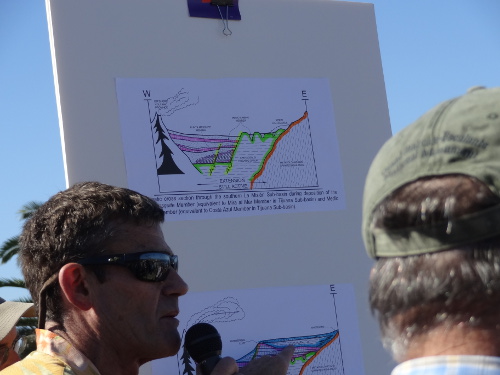
|
|
Group at el Mirador
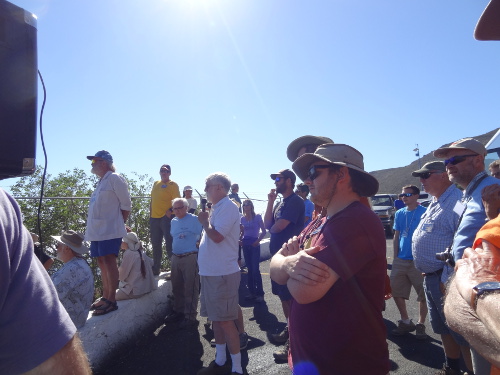
|
View of highway and agriculture
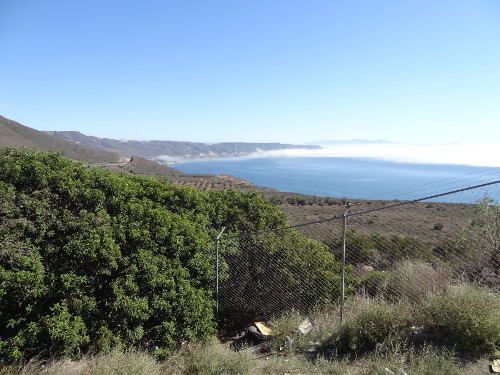
|
|
Broken highway after landslide in 2013

|
Hwy 1D redesign
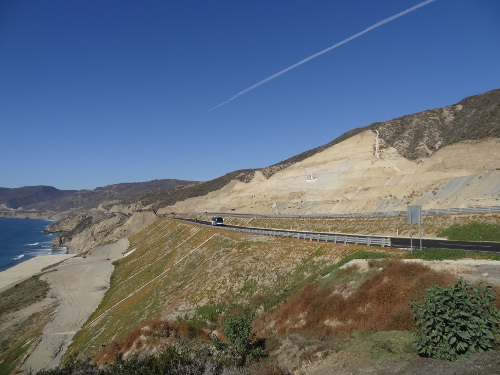
|
|
New base of slope
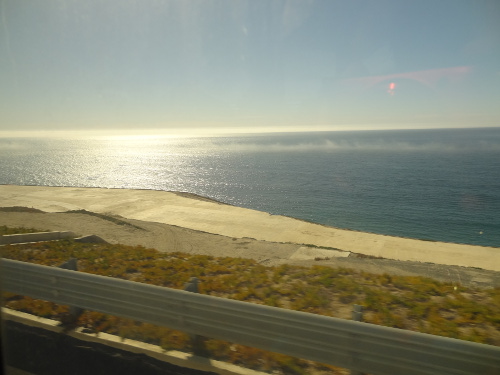
|
Campground at Punta Banda
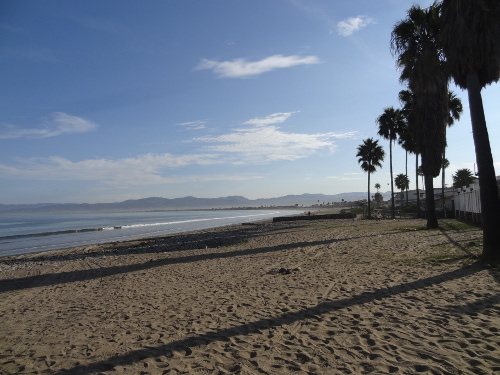
|
|
Sunday, October 23: Catered breakfast.
Convoy leaves at approximately 9am, heading south through the Santo Tomas and Agua Blanca Valleys to explore multiple stops along the Agua Blanca Fault.
Lunch in the field. Return to camp site at El Palomar in Santo Tomas Valley.
Catered dinner at local winery including whole pig cooked over coals in a pit.
Local history presented by owner of resort/campground
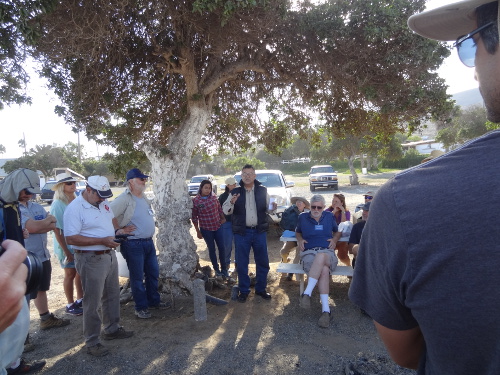
|
In Agua Blanca Fault along Hwy1
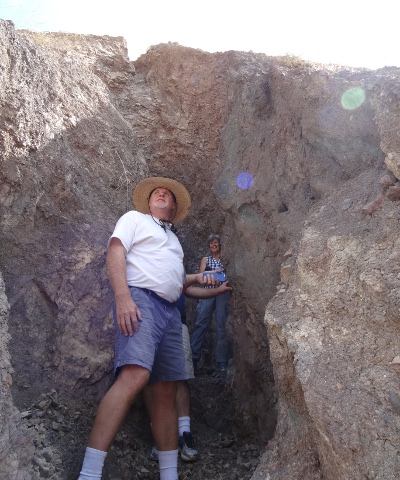
|
|
Observing Agua Blanca Fault from above trench
Green tabs indicate sample locations
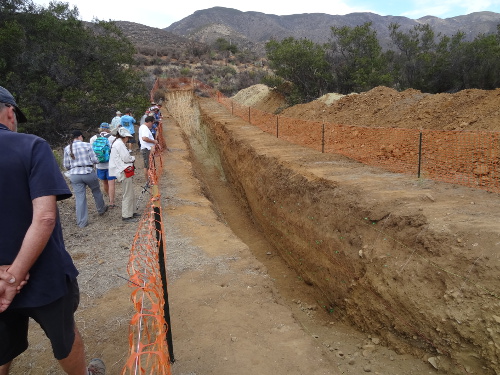
|
Drone view of the trench
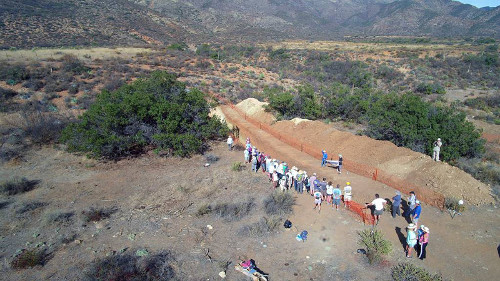
|
|
Norrie in trench
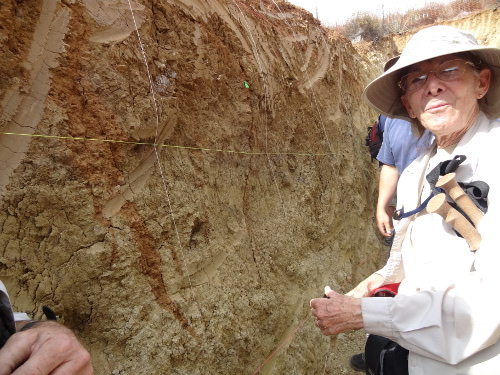
|
Winery cut into rock
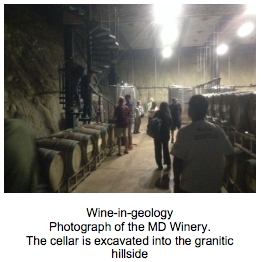
|
|
Monday, October 24. Catered breakfast.
Convoy departs around 9am.
Possible stop at coastal overlook depending on time.
9-mile transit along Highway 201 to examine outstanding exposures of Cretaceous aged, faulted deltaic sediments.
Cross border and return to vehicles at approximately 6 to 7pm.
Campground at El Palomar - Minch briefing
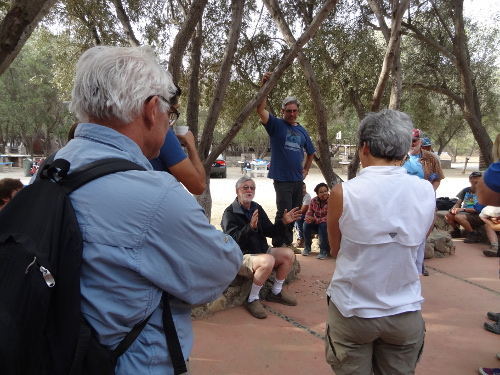
|
Another look at Hwy1D repair
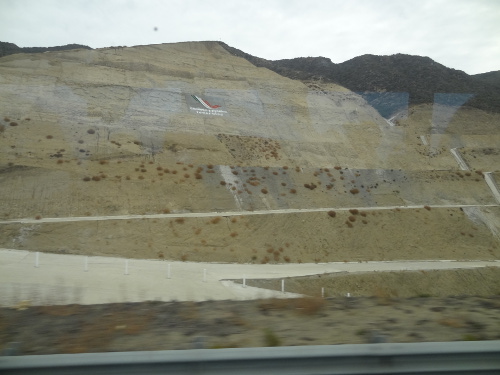
|
|
Roadcut along new Boulevard 2000
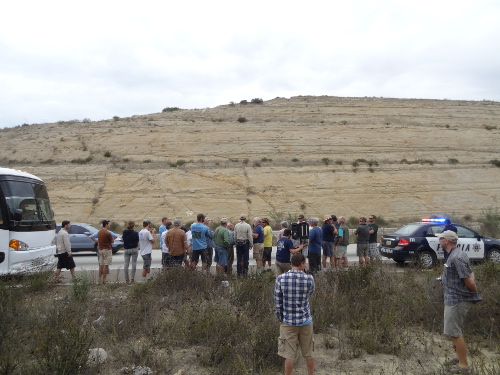
|
Fan deltas and turbidites
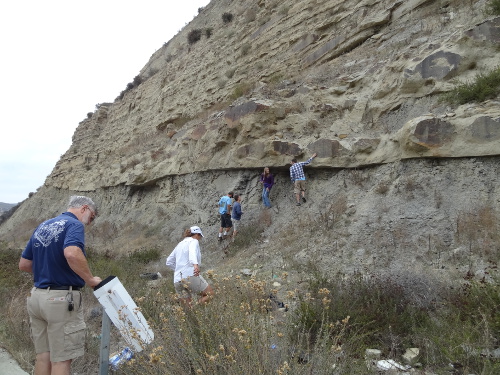
|
|
Diane feels grooves on underside of bed
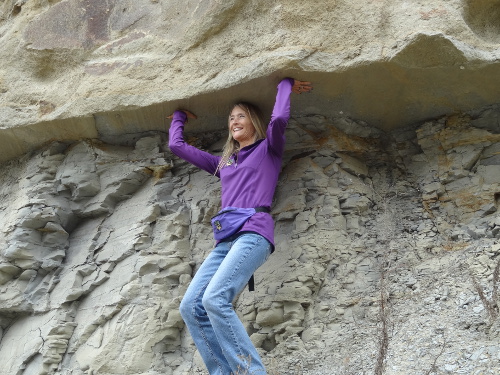
|
Highway back to US
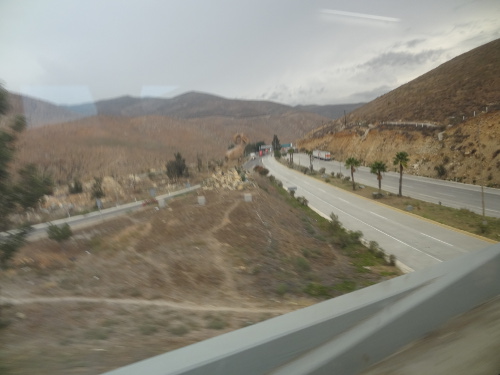
|
|
If you go back on your own, please note:
- You must have a valid US passport or valid US permanent resident card (Green Card) to cross back into the US at the end of the trip.
- Transport for the 2016 trip was a combination of bus/coach and private vehicle.
- We had a choice of both camping and hotel rooms at both overnight stops.
- All meals were provided by catering services to provide food at our overnight locations as well as during the day for lunch etc.
- We planned several modes of transport for the trip.
Most participants took the bus/coach.
However, we also required some 4x4 vehicles to access stops that cannot be reached by bus, or are too far to hike.
RECOMMENDED EQUIPMENT
Hikes were short, less than a mile.
Bring hat, sunscreen, walking stick, sturdy boots and personal field gear.
Bring camping equipment: tent, sleeping bag, folding chair, coffee mug, binoculars, etc.
Campsites are equipped with hot water for showers.
TRAVEL INFORMATION
A valid passport, US passport card is mandatory to return to the United States from Mexico.
Your passport should be valid for at least 6 months past the date of the field trip.
The following items are expected expenses when not traveling by bus in a group:
- Vehicle expenses - gas, etc.
- Car or personal travel insurance in Mexico.
- Toll Fees for personal vehicles (approximately $1.50 /toll, 3 toll stations between Tijuana and Ensenada).
- Costs for lodging. Small hotels are available adjacent to both campgrounds used on the field trip.
- Food, drinks, water, ice.
|
|















